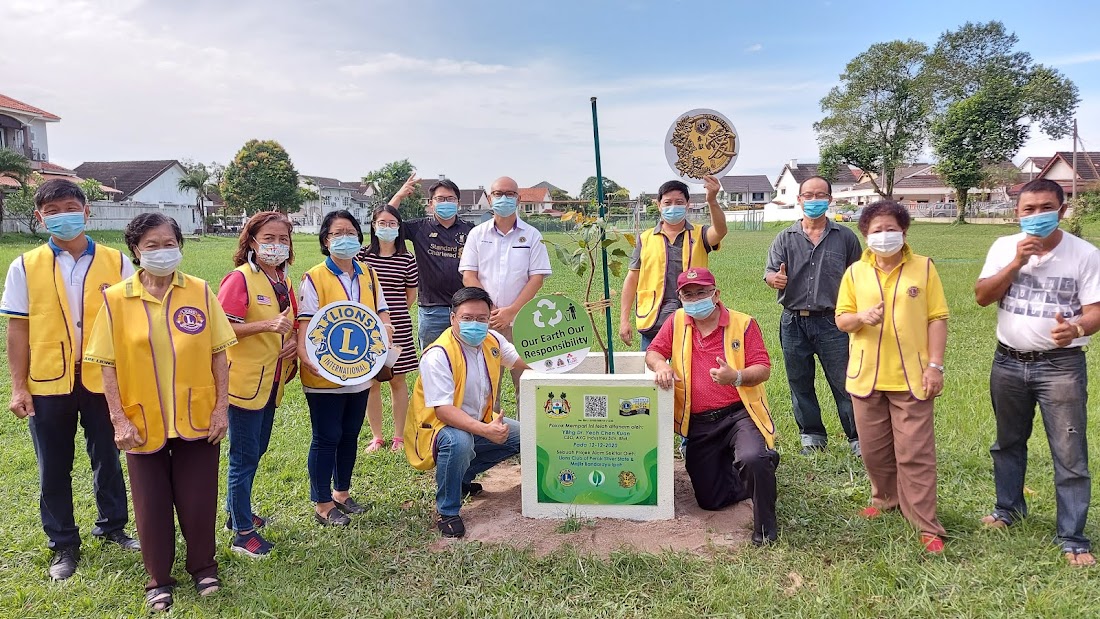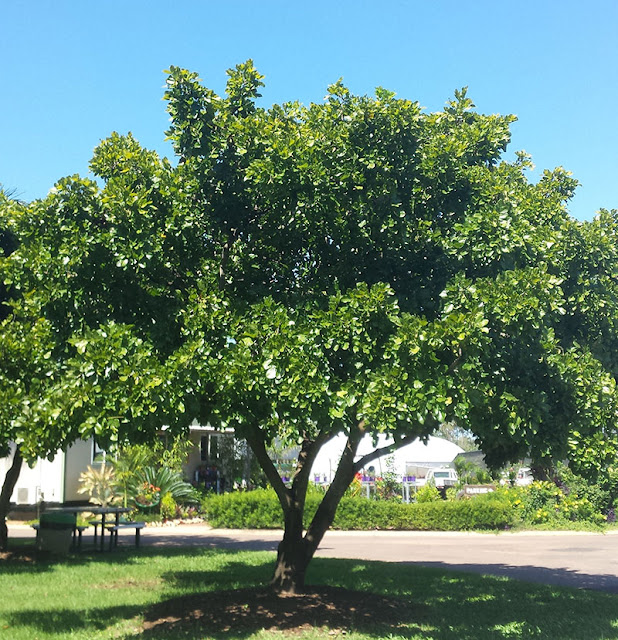12 December 2020
Program Hijaukan Bumi, Selamatkan Generasi Akan Datang merupakan sebahgian daripada Program Penanaman 1 Juta Pokok Perak peringkat Majlis Bandaraya Ipoh Zon Pasir Pinji anjuran Lions Club of Perak Silver State dengan Sokongan Majlis Bandaraya Ipoh. Ia bertujuan untuk membantu menghijaukan bumi Ipoh khasnya dan Perak amnya bagi membantu mencapai misi Ipoh Bandar Raya Rendah Karban 2030.
Program ini akan dirasmikan YBhg Dato' Hj Rumaizi Bin Baharin, Datuk Bandar Ipoh. Turut hadir, YBhg Datin Seri Dr. Nomee Ashikin Binti Dato' Mohammed Radzi, Pengerusi Perak Foodbank yang juga peneraju Tindakan Iklim Perak.
Pada tahun 2021, MBI telah mensasarkan penanaman sebanyak 1,500 pokok di sekitar Majlis Bandaraya Ipoh. Di sekitar Majlis Bandaraya Ipoh kini mempunyai anggaran 400,000 pokok. Ini bermakna pada tahun 2030 kawasan Majlis Bandaraya Ipoh akan mempunyai 415,000 pokok.
Anggaran bilangan kereta di kawasan Majlis Bandaraya Ipoh pada tahun 2030 adalah sebanyak 160,000. Setiap kereta biasa akan menghasilkan gas CO2 sebanyak 4,600 kg setahun. Ini bermakna pada tahun 2030 jumlah CO2 yang dihasilkan kereta adalah sebanyak 736,000,000 kg CO2.
Setiap pokok yang matang pada usia 10 tahun dengan anggaran berat 1,000kg akan menyerap sebanyak 3,670kg CO2. Ini bermakna 415,000 pokok dapat menyerap sebanyak 1,523,050,000 kg CO2.
Pada tanggal 12 Disember 2020, sebanyak 6 pohon pokok Mempari (Pongamia Pinatta) akan ditanam di Padang Housing Trust, Ipoh. Program ini adalah hasil cadangan Ahli Majlis Dr. Richard Ng, selaku Ahli Majlis Zon Pasir Pinji.
Tanggal 12-12-2020 dipilih supaya generasi akan datang terutama warga Taman Housing Trust dapat mengingati tarikh keramat ini di mana pokok perlu ditanam demi menangani perubahan cuaca yang kian ketara.
Setiap pokok yang ditanam ini mempunyai surat beranak yang dipautkan ke sistem EZ3 dengan code QR bagi membolehkan generasi akan datang mengetahui bukan sahaja siapa dan bila ianya ditanam tetapi juga jenis pokok dan faedahnya.
Pokok Pongamia Pinatta ini dipilih untuk dijadikan sebagai teduhan kepada warga emas yang sentiasa santai di kawasan ini.
Lions Club of Perak Silver State turut menyumbang 2 kerusi taman yang turut disumbang 3 kerusi taman oleh MBI.
Enam Pohon Pokok Mempari telah ditanam seperti berikut:
Pokok # 1
Tree Serial Number: LCPSS-MBI/ 007/12/20
Name of Tree: Mempari (Pongamia Pinatta or Milletia Pinatta)
Pokok # 2
Tree Serial Number: LCPSS-MBI/ 008/12/20
Name of Tree: Mempari (Pongamia Pinatta or Milletia Pinatta)
Pokok # 3
Tree Serial Number: LCPSS-MBI/ 009/12/20
Name of Tree: Mempari (Pongamia Pinatta or Milletia Pinatta)
Pokok # 4
Tree Serial Number: LCPSS-MBI/ 010/12/20
Name of Tree: Mempari (Pongamia Pinatta or Milletia Pinatta)
Pokok # 5
Tree Serial Number: LCPSS-MBI/ 011/12/20
Name of Tree: Mempari (Pongamia Pinatta or Milletia Pinatta)
Pokok # 6
Tree Serial Number: LCPSS-MBI/ 012/12/20
Name of Tree: Mempari (Pongamia Pinatta or Milletia Pinatta)
Millettia pinnata is a legume tree that grows to about 15–25 metres (50–80 ft) in height with a large canopy which spreads equally wide. It may be deciduous for short periods. It has a straight or crooked trunk, 50–80 centimetres (20–30 in) in diameter, with grey-brown bark which is smooth or vertically fissured. Branches are glabrous with pale stipulate scars. The imparipinnate leaves of the tree alternate and are short-stalked, rounded or cuneate at the base, ovate or oblong along the length, obtuse-acuminate at the apex, and not toothed on the edges. They are a soft, shiny burgundy when young and mature to a glossy, deep green as the season progresses with prominent veins underneath.[5]
Flowering generally starts after 3–4 years with small clusters of white, purple, and pink flowers blossoming throughout the year. The raceme-like inflorescence bear two to four flowers which are strongly fragrant and grow to be 15–18 millimetres (0.59–0.71 in) long. The calyx of the flowers is bell-shaped and truncate, while the corolla is a rounded ovate shape with basal auricles and often with a central blotch of green color.[3][6]
Croppings of indehiscent pods can occur by 4–6 years. The brown seed pods appear immediately after flowering and mature in 10 to 11 months. The pods are thick-walled, smooth, somewhat flattened and elliptical, but slightly curved with a short, curved point. The pods contain within them one or two bean-like brownish-red seeds, but because they do not split open naturally the pods need to decompose before the seeds can germinate. The seeds are about 1.5–2.5 centimetres (0.59–0.98 in) long with a brittle, oily coat and are unpalatable to herbivores.[5][6]
Naturally distributed in tropical and temperate Asia, from India to Japan to Thailand to Malesia to north and north-eastern Australia to some Pacific islands;[1][3] It has been propagated and distributed further around the world in humid and subtropical environments from sea level to 1200m, although in the Himalayan foothills it is not found above 600m.[7] Withstanding temperatures slightly below 0 °C (32 °F) and up to about 50 °C (120 °F) and annual rainfall of 500–2,500 mm (20–100 in), the tree grows wild on sandy and rocky soils, including oolitic limestone, and will grow in most soil types, even with its roots in salt water.[8]
The tree is well suited to intense heat and sunlight and its dense network of lateral roots and its thick, long taproot make it drought-tolerant. The dense shade it provides slows the evaporation of surface water and its root nodules promote nitrogen fixation, a symbiotic process by which gaseous nitrogen (N2) from the air is converted into ammonium (NH4+, a form of nitrogen available to the plant). M. pinnata is also a fresh water flooded forest species as it can survive total submergence in sweet water for few months continuously. M. pinnata tree is common in Tonlesap lake swamp forests in Cambodia
Millettia pinnata is an outbreeding diploid legume tree, with a diploid chromosome number of 22.[6] Root nodules are of the determinate type (as those on soybean and common bean) formed by the causative bacterium Bradyrhizobium.
Uses:
Millettia pinnata is well-adapted to arid zones and has many traditional uses. It is often used for landscaping purposes as a windbreak or for shade due to the large canopy and showy fragrant flowers. The flowers are used by gardeners as compost for plants requiring rich nutrients. The bark can be used to make twine or rope and it also yields a black gum that has historically been used to treat wounds caused by poisonous fish. The wood is said to be beautifully grained but splits easily when sawn thus relegating it to firewood, posts, and tool handles.[7]
While the oil and residue of the plant are toxic and will induce nausea and vomiting if ingested, the fruits and sprouts, along with the seeds, are used in many traditional remedies.[8] Juices from the plant, as well as the oil, are antiseptic[medical citation needed] and resistant to pests. In addition M. pinnata has the rare property of producing seeds of 25–40% lipid content of which nearly half is oleic acid.[9] Oil made from the seeds, known as pongamia oil, is an important asset of this tree and has been used as lamp oil, in soap making, and as a lubricant for thousands of years. The oil has a high content of triglycerides, and its disagreeable taste and odor are due to bitter flavonoid constituents including karanjin, pongamol, tannin and karanjachromene.[8] It can be grown in rainwater harvesting ponds up to 6 m (20 ft) in water depth without losing its greenery and remaining useful for biodiesel production.[10]
The residue of oil extraction, called press cake, is used as a fertilizer and as animal feed for ruminants and poultry.[11]
Long used as shade tree, M. pinnata is heavily self-seeding and can spread lateral roots up to 9 m (30 ft) over its lifetime. If not managed carefully it can quickly become a weed leading some, including Miami-Dade County, to label the tree as an invasive species.[12] However this dense network of lateral roots makes this tree ideal for controlling soil erosion and binding sand dunes.[7]
Source: https://en.wikipedia.org/wiki/Millettia_pinnata




































